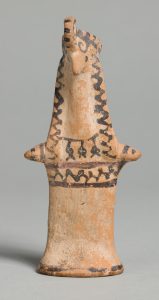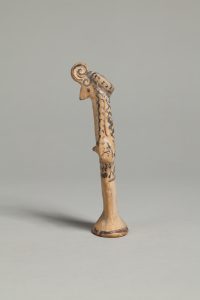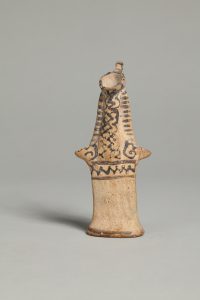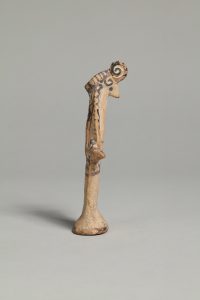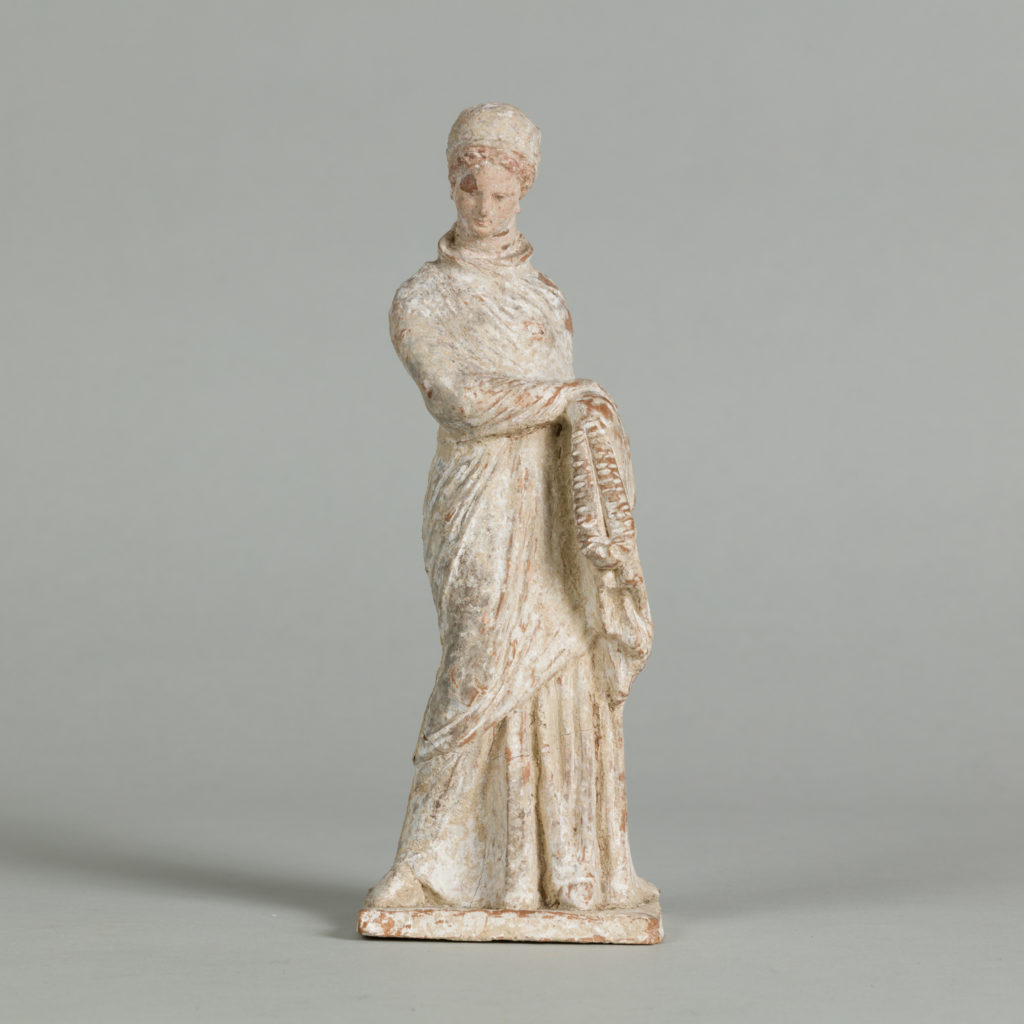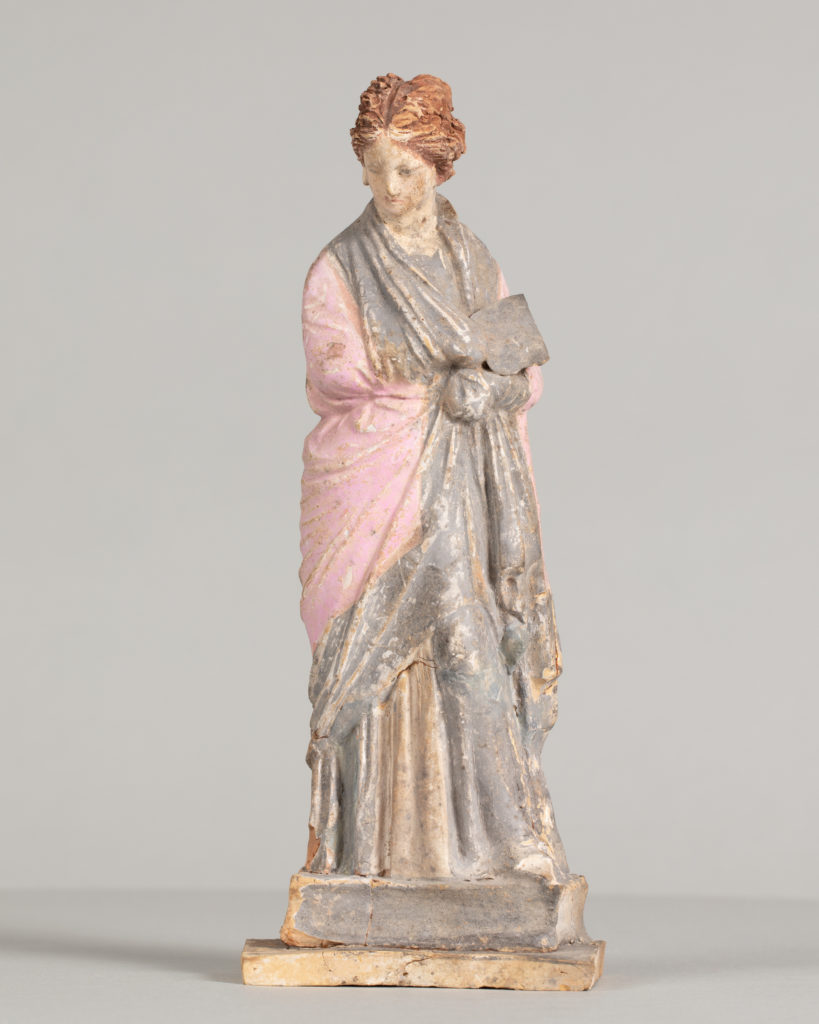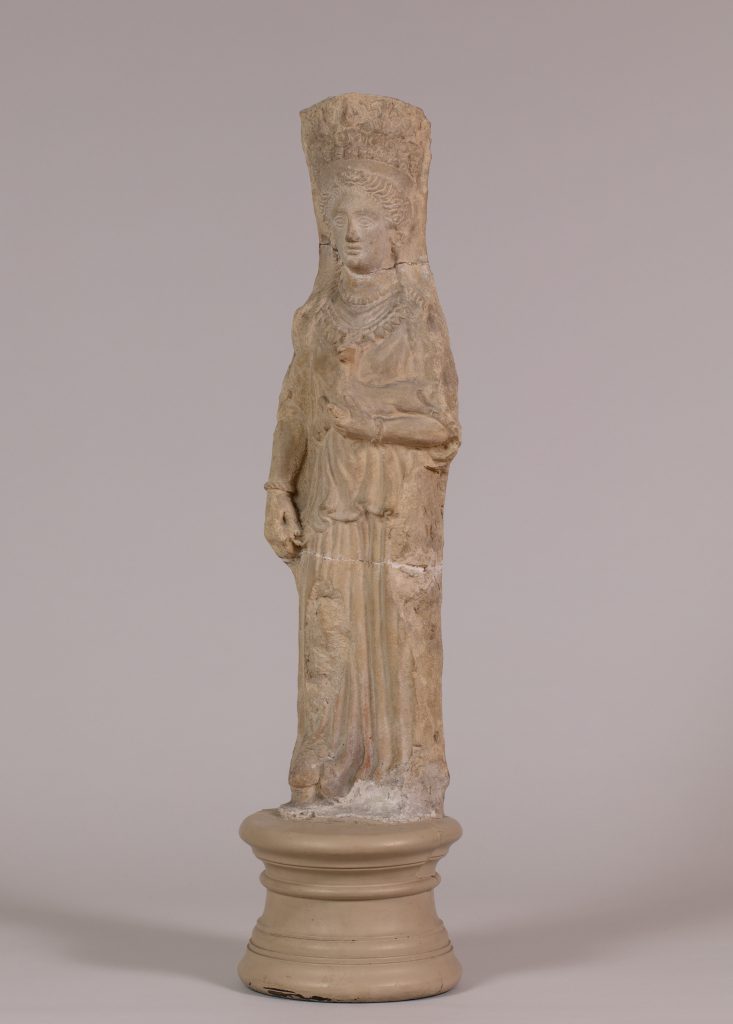

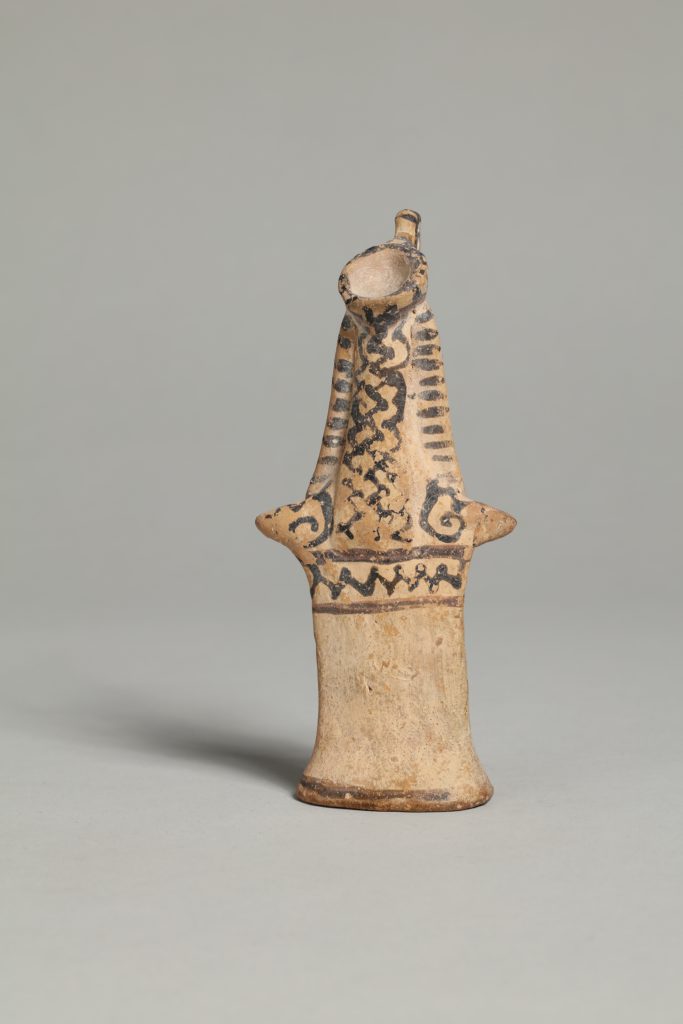
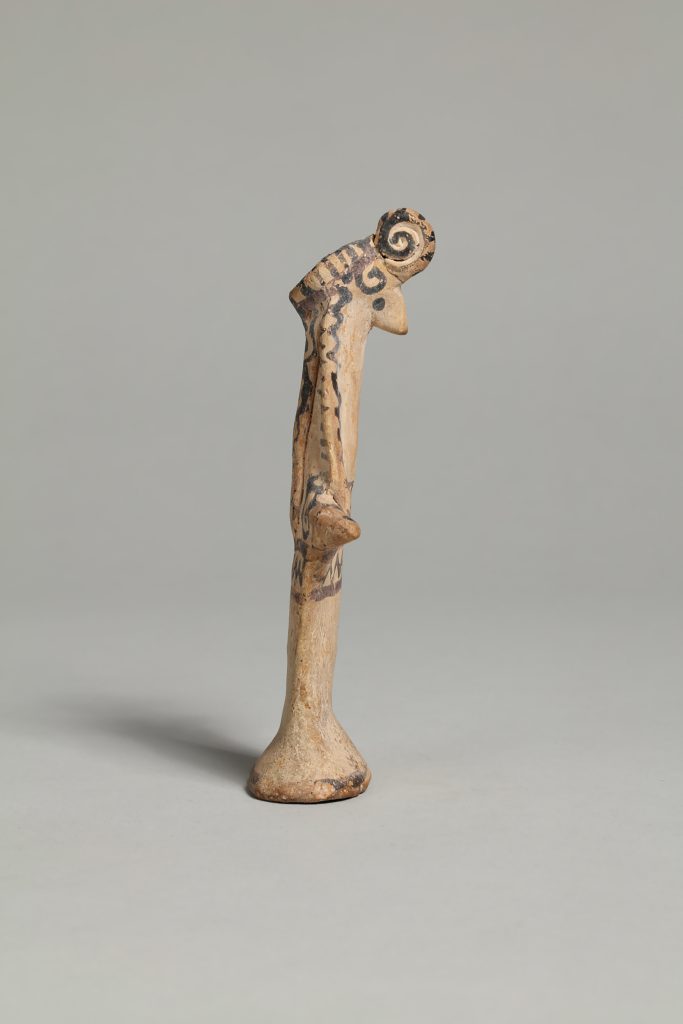
Gift of Edward Perry Warren, Esq., Honorary Degree 1926
1923.29This terracotta from Boeotia occupies an important place within the broader development of figural depictions as a geometric prefiguration of later, more naturalistic figures. The body appears two-dimensional in its flatness, consisting of a column-like base with two short protrusions for arms and a tall triangular shape for a long neck and head. The zigzag outline of the triangle implies the female’s braided hair, which forms one large, sculpted curl atop her head, framed by one smaller painted curl on each side. She wears a circular crown or hat visible from behind. Her face can be described as bird-like: her eyes are two simple painted dots that flank a protruding, beak-like nose. She appears to be adorned with a necklace formed by a soft curvilinear line from which three pomegranate-like shapes hang. Underneath this piece of jewelry is a thin band ornamented with a zigzag pattern, creating the impression that she is wearing a long garment.
The highly stylized, schematic nature of this work complements many of Edward Perry Warren’s other donations, such as a roughly contemporaneous group of Tanagra figures created between 400 and 200 B.C.E. This enables a figural evolution to be traced in Greek art, from more geometric figures such as this to more naturalistic depictions of the Tanagras, with the standing woman as a midpoint. A similar preference for the schematic over the naturalistic can also be seen on terracotta pottery from the Geometric period, such as the pomegranate, indicating that this stylization extends beyond figurines.
Although the identity and function of this figurine has inspired many theories, it has yet to be definitively proven. Because similar figures are depicted with a child, it has been posited that this female represents a mother goddess. Other proposed functions for the figures include both votive and funerary offerings. Limited archaeological evidence and the many illegal excavations of Tanagra present challenges to answering these questions.
Before 1923, collection of Edward Perry Warren; 1923, gifted to the Bowdoin College Museum of Art by Edward Perry Warren.
Collector
A testament to his impact as an influential twentieth-century American antiquities collector, Edward Perry Warren’s (1860–1928, H ’26) name is linked to hundreds of ancient objects housed in institutions across the United States, including more than five hundred works at the Bowdoin College Museum of Art alone.
